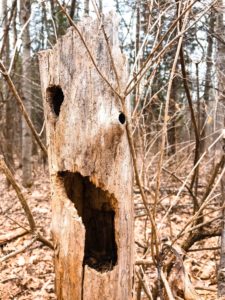
Be vigilant when looking out for these tree diseases that could spell trouble.
Spring has finally sprung, so it is time to get back outside and start enjoying nature again. Springtime means that trees will start budding and blooming again, signalling new life and a healthy outlook on the rest of the coming year. As a homeowner, you owe it to yourself to get outdoors and enjoy your property as the weather begins to get better and better. Healthy trees are a great benefit and addition to any outdoor space, but if the trees on your property are unhealthy or diseased, they prove to be a serious risk to your home and family. Keep reading to learn some common signs of tree diseases so that you can take care of those problems before they become unmanageable.
Leaf Rust
If one of your trees has leaf rust, then it will have a distinct spotting pattern on its leaves. Keep an eye out for orange or red leaves, especially when it occurs in seasons other than autumn.
Leaf Spot
Similar to leaf rust, leaf spot can cause strange discolorations in your trees’ leaves.
Fire Blight
This disease often gives a tree a burned look on its bark and leaves.
Powdery Mildew
To ensure a tree’s health, check leaves for signs of damage or strange discolorations that look unnatural. If leaves are dusty or white, your tree may have a dusty mildew problem.
Gall
Gall is actually a specific type of fungus that tends to grow on tree trunks or branches of older trees.
Japanese Beetle Infestation
Japanese beetles are an invasive species to North America. They are insects that tend to feed on leaves of deciduous trees. Look out for Japanese beetles by looking for bugs with a brown thorax.
Emerald Ash Borers
Like Japanese beetles, emerald ash borers are also insects that can seriously affect your trees. They are bright green and can kill an entire mature tree.
Bagworms
Bagworms can be spotted by looking for their white, spidery nests in the branches of your trees. They house grub insects that feed on older tree leaves and branches. Gross!
Questions? Harford Tree is Here to Help
If you still have unanswered questions when it comes to common tree diseases, the trained professionals at Harford Tree are here to help. We have been in business for years now, and we regularly provide our customers with great work and quality customer service in Harford County, Baltimore, City, Baltimore County, Bel Air, Fallston, Perry Hall, Towson, Essex, Parkville, White marsh, and middle River. For service during business hours, reach out to us or give us a call at 410-592-7321. We offer 24/7 emergency service as well, just give us a call at 443-250-6649. For updates about our business, more informative tips, and to see what we have been working on, follow us on Facebook and Twitter.
